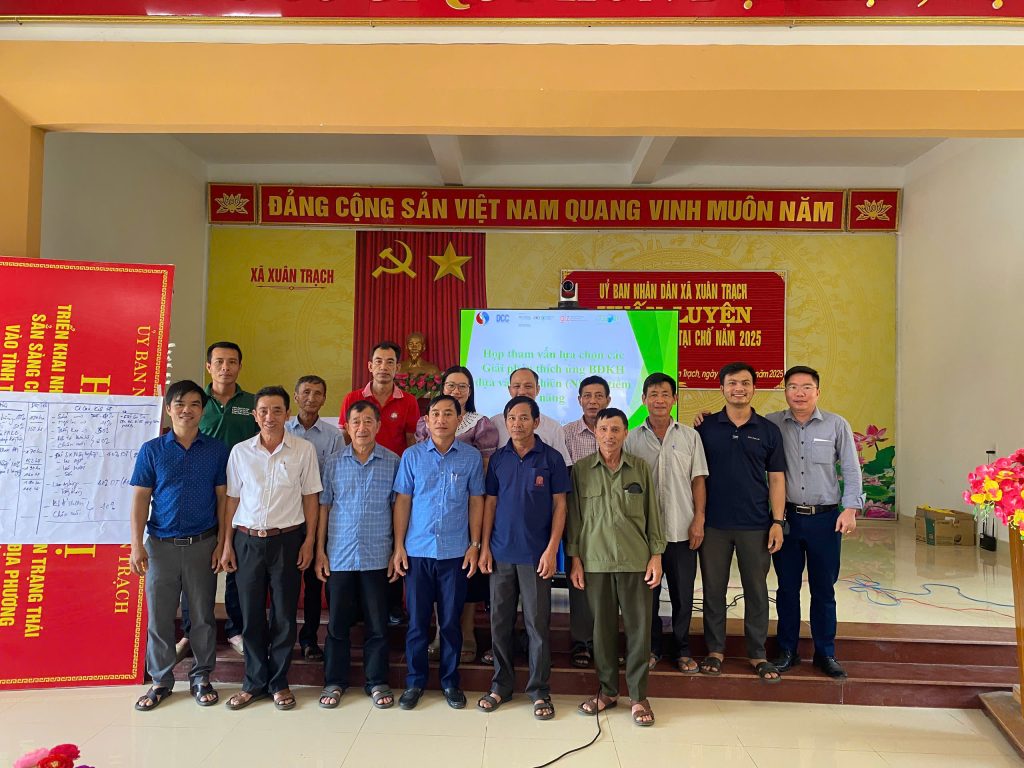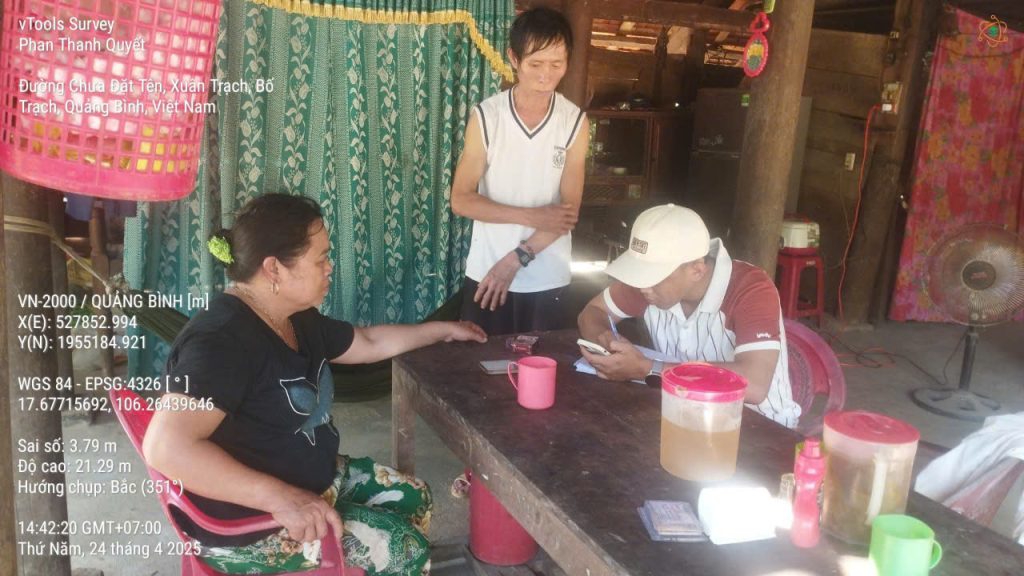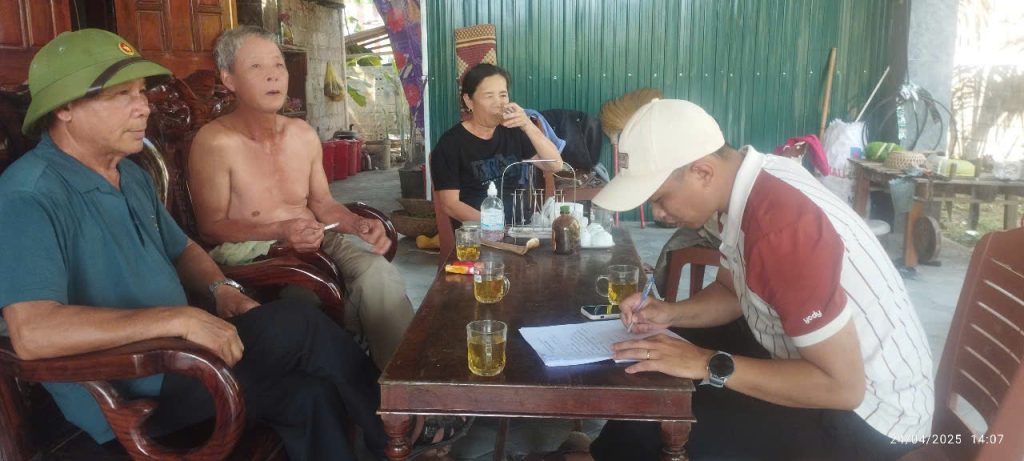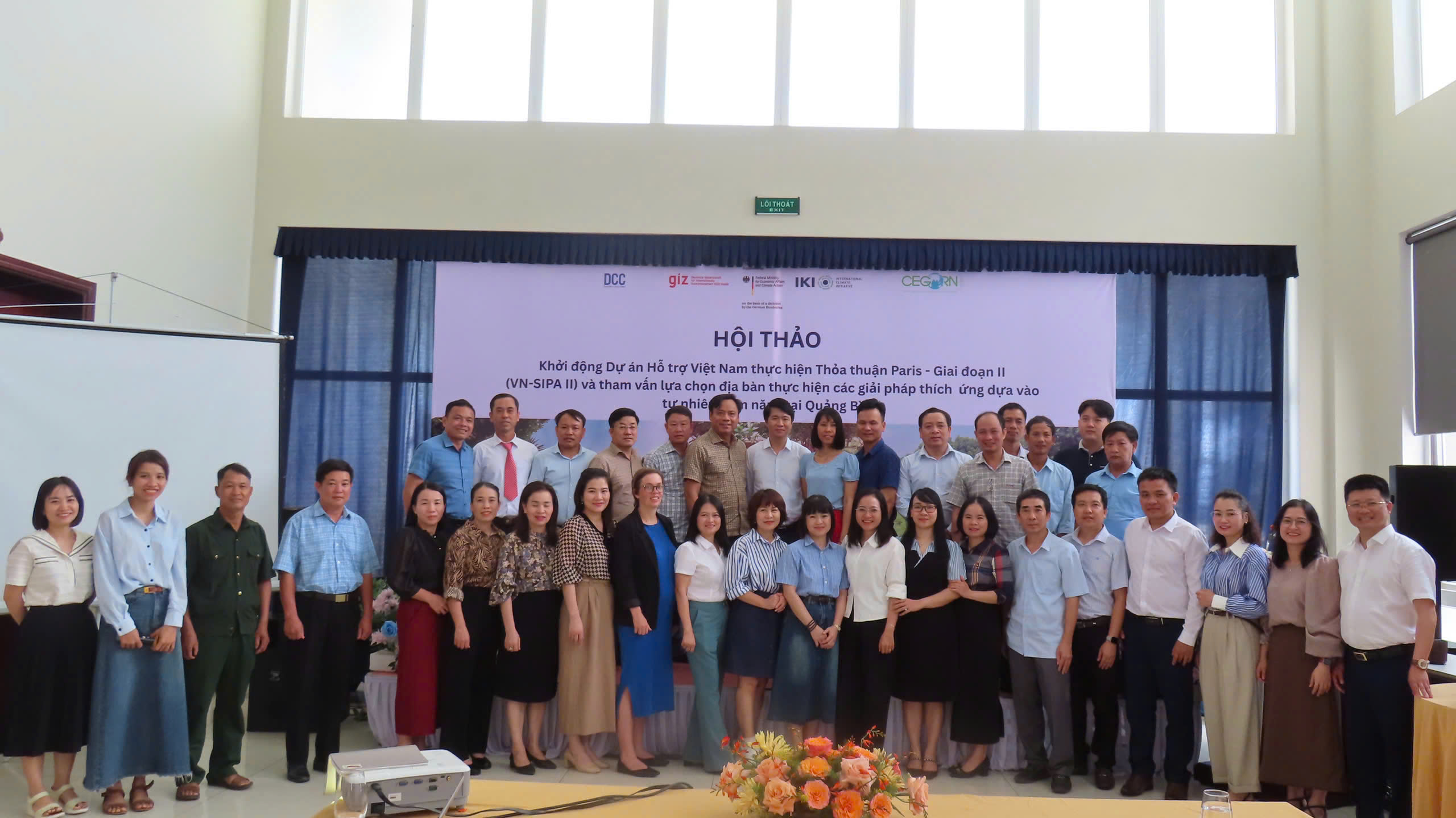On April 24, 2025, within the framework of the project “Enhancing resilience to climate change impacts for vulnerable smallholder farmers through gender-responsive nature-based solutions,” the Center for Highland Natural Resource Governance (CEGORN) collaborated with local authorities to conduct a survey and consultation to select the site for implementing the NbSA model in Xuan Trach commune, Bo Trach district, Quang Binh province.
This activity involved representatives from the commune People’s Committee, specialized officials in agriculture and environment, political-social organizations, and representatives from 10 villages in the area. The main discussions revolved around the current extreme climate conditions, ongoing agricultural ecological models, and opportunities to improve and expand effective adaptation solutions suitable for local conditions.
The main discussions revolved around the current extreme climate conditions, ongoing agricultural ecological models, and opportunities to improve and expand effective adaptation solutions suitable for local conditions.

Identifying target groups and developing solution ideas
Through the working process, the research team, local representatives, and the community initially identified areas and livelihood models vulnerable to climate change, while forming suitable NbSA solution ideas. These solutions are linked to the soil, climate, and livelihoods of the people, with the potential to integrate into sustainable agricultural development strategies and natural resource conservation.

Field survey – Practical foundation
An important part of the mission was the field survey in the villages of the commune, focusing on existing agricultural models. The survey team reviewed effective livelihood models with potential for expansion, while noting the impact of extreme climate phenomena that have occurred and are occurring.

Initial results
The series of survey and consultation activities in Xuan Trach recorded several notable results:
Identifying areas significantly affected by climate change;
Analyzing meteorological and hydrological risks in each area;
Evaluating the effectiveness of current agricultural models;
Selecting potential NbSA solutions along with suitable crops for local livelihoods.
hese are important foundations for effectively implementing adaptation models in the next phase, aiming to enhance community resilience and promote sustainable, gender-responsive, and nature-friendly agriculture.



Previously, CEGORN conducted surveys and consultations at the district level in Tuyen Hoa, Bo Trach, and Minh Hoa, and has been conducting surveys across 16 communes in these localities.
| About the project The project implemented by CEGORN is part of Activity 3.4 – Promoting the application of nature-based adaptation solutions, biodiversity conservation, and climate-smart agriculture under Component 3. Biodiversity conservation and nature-based climate change adaptation in the field of natural resources and agriculture in the VN-SIPA II Project – Supporting Vietnam in implementing the Paris Agreement, funded by the German Federal Ministry for Economic Affairs and Climate Action (BMWK) through the International Climate Initiative (IKI) and implemented by the German International Cooperation Organization (GIZ). Stakeholders Ministry of Natural Resources and Environment (now Ministry of Agriculture and Environment) – Project managing agency Department of Climate Change – Ministry of Agriculture and Environment – Project implementing agency Relevant ministries (Ministry of Transport (now Ministry of Construction), Ministry of Agriculture and Environment, Ministry of Finance) and provinces Quang Binh, Ha Tinh – Project participating localities. |






